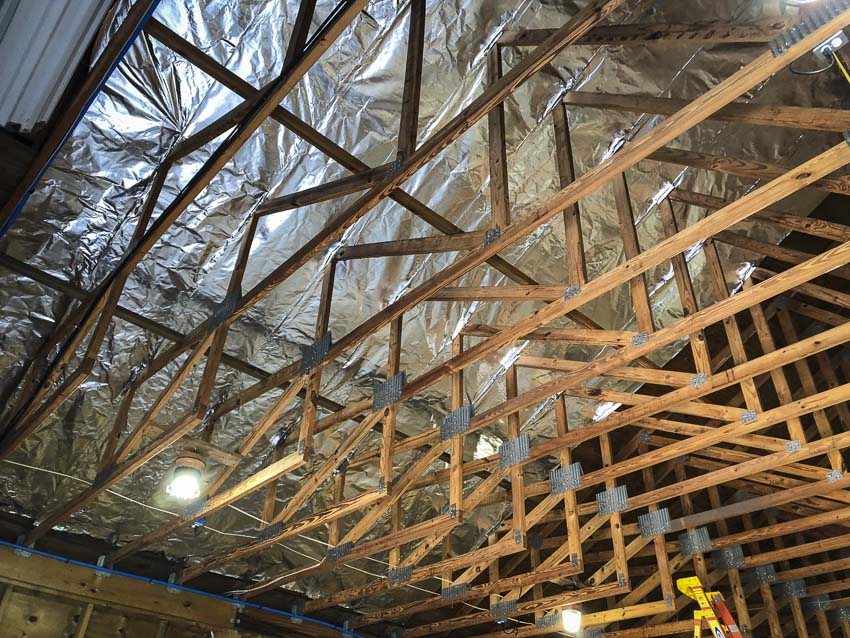To solve the problem of a very hot work environment, we set about installing radiant barrier in a shop using AtticFoil. We chose AtticFoil for our radiant barrier installation for several reasons. First, they manufacture rolls in multiple sizes. While AtticFoil sells more 48-inch rolls than anything else, we selected 26-inch wide rolls to span our shop trusses. Second—we also like that AtticFoil bills itself as a DIY brand—meaning they intend for consumers to purchase these products for installation without professional help.
Editor’s Note: Our large shop uses pole barn construction. As a result, the joist construction closely resembles an attic—just without the attic floor. That means the same installation methods used here—as well as the benefits of the radiant barrier—apply equally to a residential attic.
Check out our article on What is Radiant Barrier to learn more about radiant barrier technology.
How to Install Radiant Barrier Overview
Step 1: Determine How Much Material You Need
We were installing the radiant barrier in a shop space measuring 63×40. To figure the math, we took the area and multiplied it by 25% to account for the rather steep 6/12 roof pitch as well as some extra to cover the East-facing front peak and any potential overages. The formula ends up looking something like this:
65 ft x 43 ft x 1.25 = 3,493 sq ft
Calculating the Costs When Installing Radiant Barrier
With our amount in mind, we placed the order for 26″ Wide Heavy Radiant Barrier Foil online. While many choices exist for radiant barrier, AtticFoil presents a great value. Figure roughly $182 per 1000 sq. ft. The material comes in 500 sq. ft. rolls—perfect since you can still manipulate these rolls easily. There are additional price breaks as you order higher quantities, but you see the biggest drop at 1,000 sq. ft. Ordering 3,500 sq. ft. would cost $622.95, or 17.8 cents ($0.178) per sq. ft.
Step 2: Prep Your Tools
For installing radiant barrier you need a few things. First and foremost, the Milwaukee M12 cordless staple gun saves your wrist—not to mention hours of time. Using a manual stapler to affix 3500 square feet of radiant barrier sounds like a bad idea. Do yourself a favor and buy this cordless tool. You also need a LOT of staples. Plan on going through a box of 1,250 for every 1,000 sq. ft. of material you install. 3/8-inch T50 style staples work great for this application.
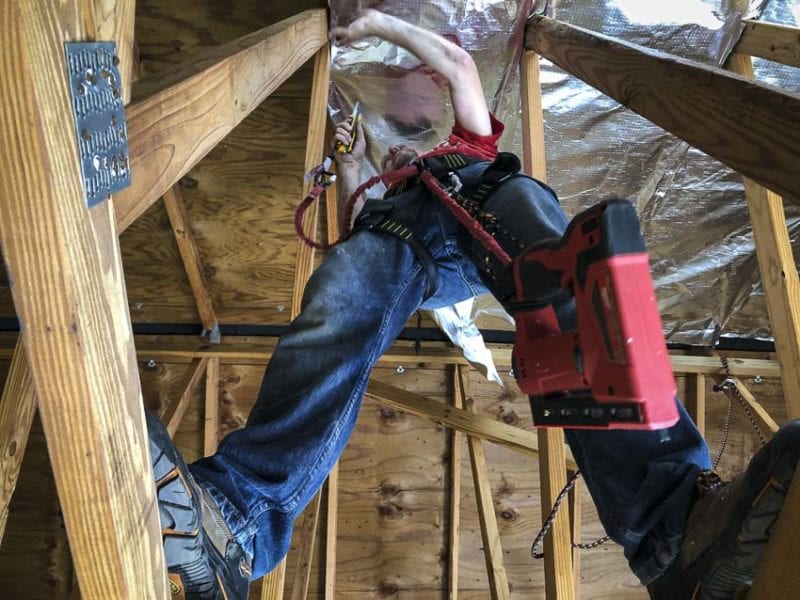
In our installation, we didn’t have an attic floor. That meant we needed fall protection. For that, we tethered off and also turned to Milwaukee locking tool lanyards to protect our tools. We also made great use of our Werner podium ladder.
Step 3: Begin Sizing and Cutting Lengths of Radiant Barrier
Measuring from the peak, we allowed for a gap at the top and bottom of our run. This allows all-important air to enter from the bottom and exit from the top. Our shop’s ridge vent takes care of the rest. Without this airflow, you’re just trapping hot air behind the foil and you won’t gain the true benefits of a properly installed radiant barrier.
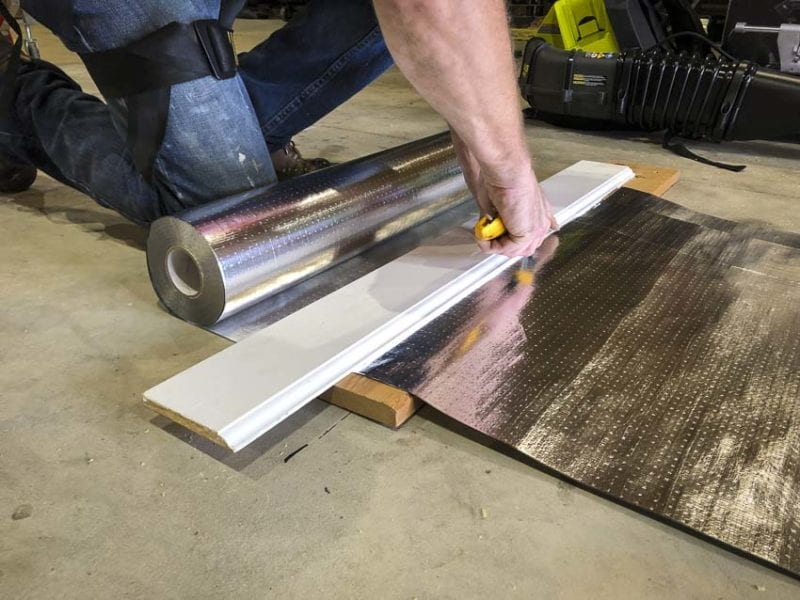
To speed up our radiant barrier installation, we lined up our roll at the threshold of our shop and then made a mark on the floor where we wanted our cut. Using a few scrap pieces of wood, we were able to quickly roll and cut pieces to the desired length. Stacking these atop each other, we could quickly pull them and install them within each row of trusses.
We cut the AtticFoil using an Olfa X-Series utility knife. Any utility knife will do, but we like the ability to cut off the segmented blades as we go—always staying sharp.
Step 4: Start at the Peak and Work Down
The best way to work with a truss installation is to start at the peak and work down. Note that this is the opposite of the method you use when installing wider sheets horizontally in an attic. There, you want to start at the bottom and work up so the layers overlap properly and help airflow to rise to the top before escaping.
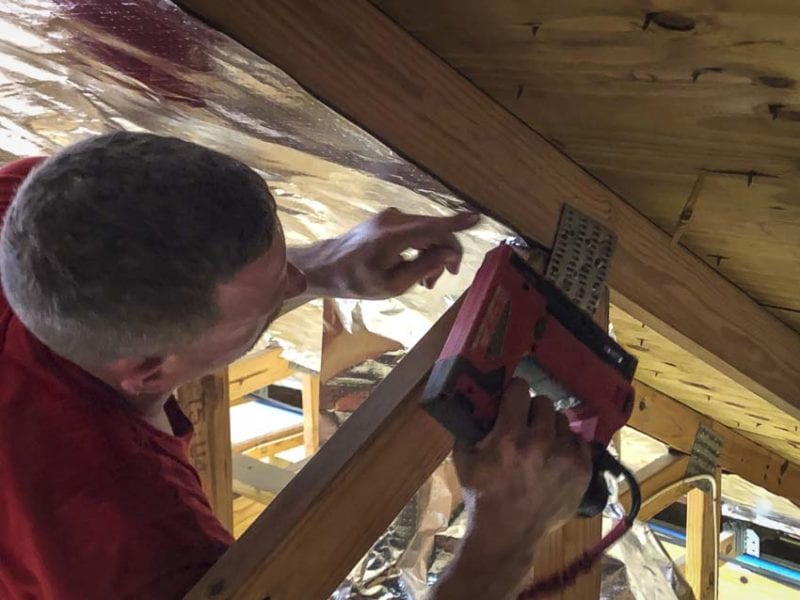
Taking the cut lengths of AtticFoil radiant barrier, we stapled the very top so that it left a gap about 8-10 inches from the bottom of our ridge vent opening. Then, it was just a matter of stapling down ensuring the material was taut across the trusses. We found that stapling down one side and then coming back to pull the width taut worked the best. Using this method we made quick progress.

We left the bottom half of each run hanging loose in order to get into a workflow. Once we completed the top half of the radiant barrier installation, we could remove our tether. We then switched to the podium ladder for the remainder of the work.
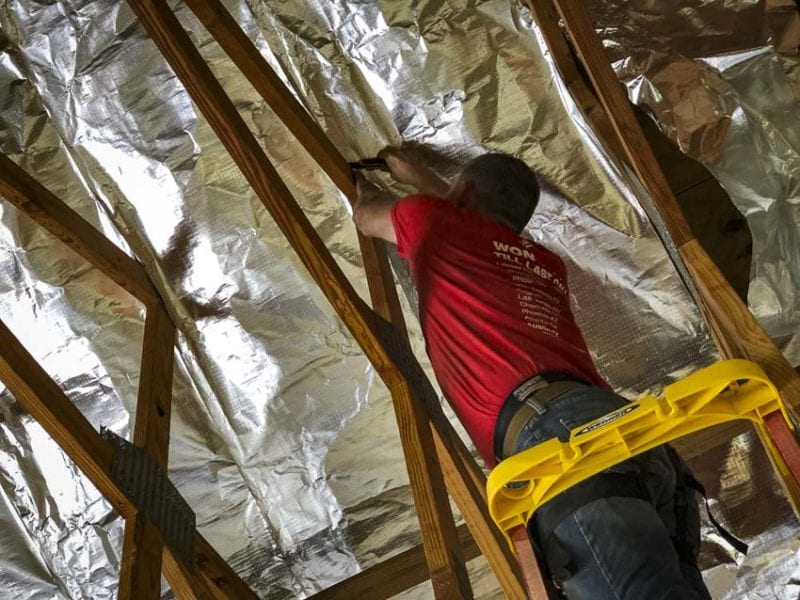
When you come to a vertical or angled truss brace, simply make a vertical cut in the material and then staple it to the face of the support piece. The idea is to make sure there are no open gaps, so just staple around everything as needed.
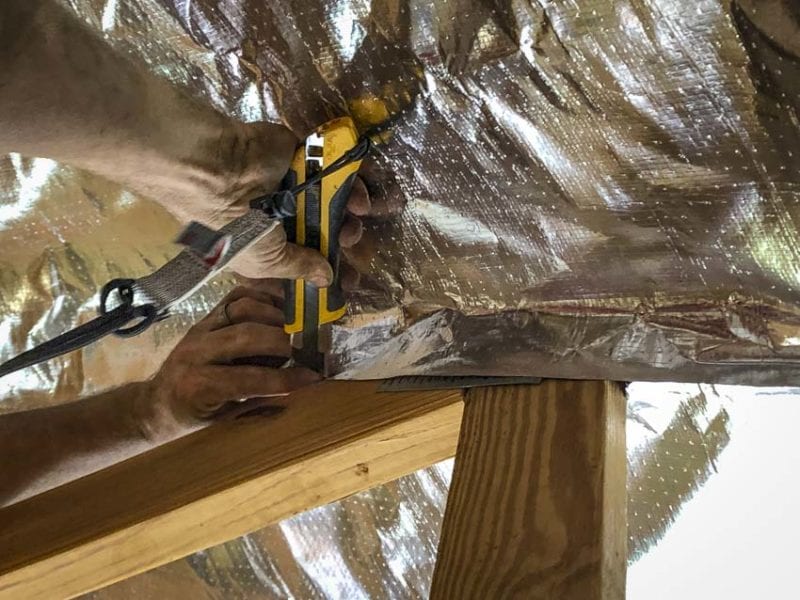
Step 5: Finish at the Bottom
Once we finished stapling the top, we got down and used our wheeled podium ladder to finish the radiant barrier installation. As you can imagine, this portion wrapped up fairly quickly. It was also nice to finish walking around those trusses at over 12-feet off the ground!
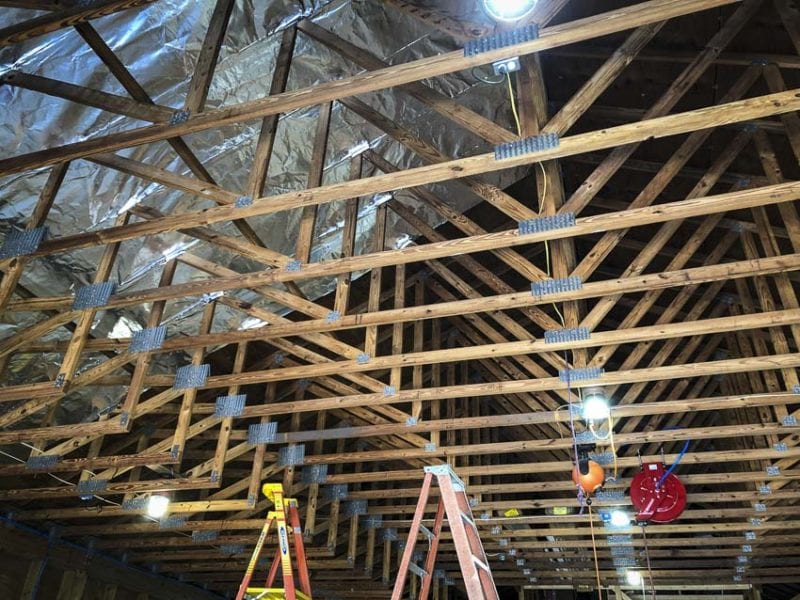
Admiring Our Handywork
At the end of the day, installation took us around 14 man-hours—mostly because we hadn’t done it before. Part of the time also included navigating the height and dealing with fall protection safety. A lower pitch, shorter roof, or a less complicated truss system would likely reduce your time.
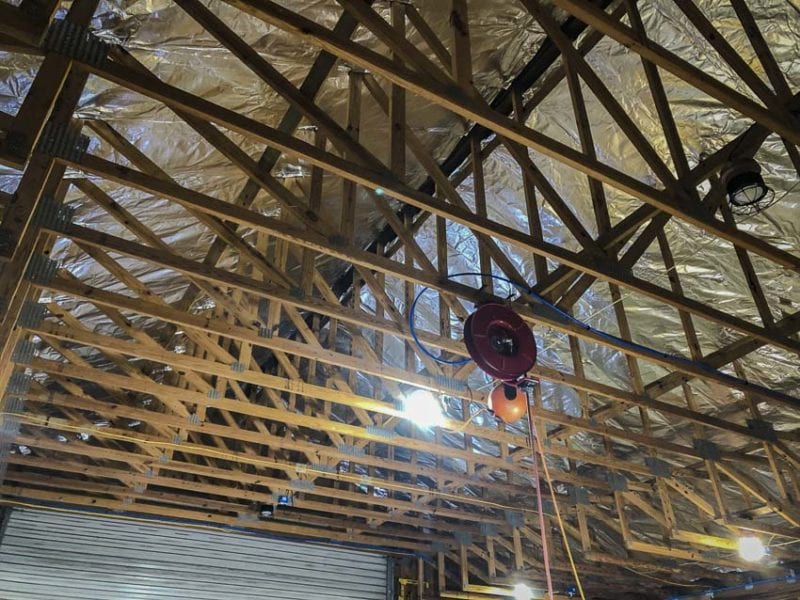
When we completed our first side of the shop we immediately began taking measurements. It was the perfect “before and after” scenario—and the effect was immediate. Even though we have yet to hit full summer here in Florida, the temperature differential is more than 20 degrees Fahrenheit. Installing AtticFoil radiant barrier made an immediate difference in the ambient shop temperature. Adding our attic fan into the mix gave us the one-two punch we needed to get through the hot Central Florida summers.
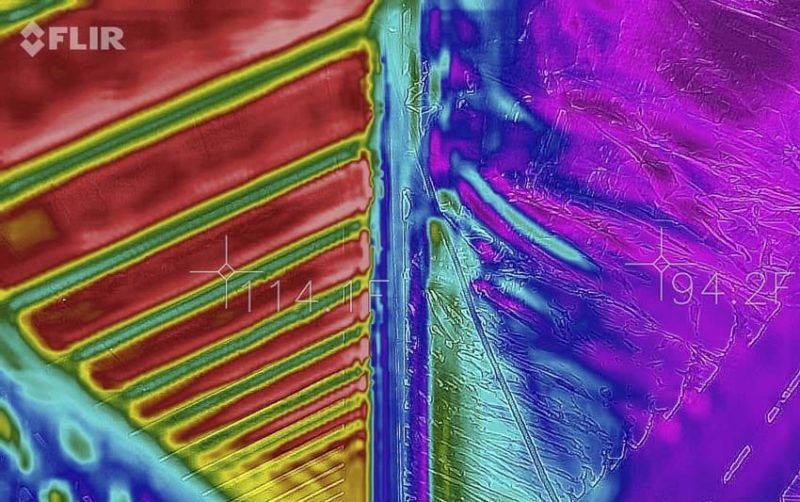
Conclusion
Anyone can benefit from installing a radiant barrier in their attic or shop. While our radiant barrier installation was commercial, there’s no reason to suspect you wouldn’t experience the same benefits in your home. We’re looking forward to seeing what the difference amounts to during the peak summer months, but we’re already enjoying the benefits of having AtticFoil radiant barrier in the shop.
Visit AtticFoil.com to see what it would cost to install a radiant barrier in your home or workshop. They also have a great Youtube channel that shows how to install their products.

